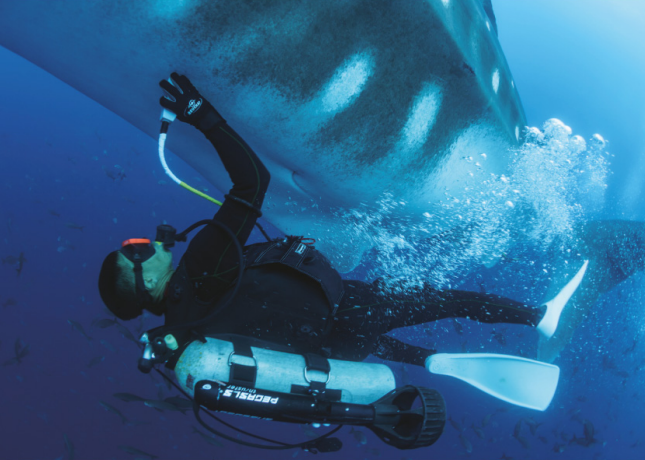Rui Matsumoto, Kiyomi Murakumo, Ryo Nozu, David Acuña-Marrero, Jonathan R. Green, Simon J. Pierce, Christoph A. Rohner, Harry Reyes, Sofia M. Green, Alistair D. M. Dove, Maria L. Torres, Alex R. Hearn.
ABSTRACT: We report on a non-invasive technique for observing the reproductive states of wild, free-swimming whale sharks Rhincodon typus for the first time. Female whale sharks (n = 22)
were assessed using underwater ultrasonography and a novel blood-sampling technique at Darwin Island in the Galapagos Marine Reserve, Ecuador. Despite the widely held assumption among
researchers that the post-pelvic distention of large females is indicative of pregnancy, ultrasound
provided no evidence of embryos or egg cases. However, the presence of follicles (diameter: 28.5−
83.6 mm) was confirmed in 2 female sharks of 11−12 m total length (TL). Additionally, 3 steroid
hormones (estradiol, testosterone, and progesterone) were analyzed in blood plasma from 6
female sharks (11−12 m TL). Hormone levels were similar to, or lower than, those obtained from
an immature female in the Okinawa Churaumi Aquarium. Based on these results, we infer that
female whale sharks (TL >11 m) in this study were mature but not pregnant. The techniques used
here for whale sharks can be successfully used to obtain non-lethal field data on the biology and
reproductive anatomy of this globally endangered fish, and are adaptable for use in other large
marine species.
Read the article in the link: https://www.int-res.com/articles/esr2023/50/n050p125.pdf?mibextid=q5o4bk




